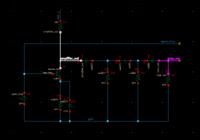kenambo
Full Member level 6

- Joined
- Feb 26, 2012
- Messages
- 393
- Helped
- 52
- Reputation
- 104
- Reaction score
- 48
- Trophy points
- 1,308
- Location
- India
- Activity points
- 3,859
Hi all
I am using 40nm PDK and i want to implement a RC oscillator of 1MHz using given npn pdk transistor.
while setting Q-point i got that my transitor BW is ft = 2.7MHz.
and my supply voltage is 1.1V.
i am using conventional design of RC oscillator.
But my circuit doesn't start oscillatons. I dont know whether it is my initial conditions problem or circuit problem.
and i heard that for oscillator analysis HB simulation is better than transcient simulation. Is it true?
If so, how can i implement it in cadence?
please help..
thanks.

I am using 40nm PDK and i want to implement a RC oscillator of 1MHz using given npn pdk transistor.
while setting Q-point i got that my transitor BW is ft = 2.7MHz.
and my supply voltage is 1.1V.
i am using conventional design of RC oscillator.
But my circuit doesn't start oscillatons. I dont know whether it is my initial conditions problem or circuit problem.
and i heard that for oscillator analysis HB simulation is better than transcient simulation. Is it true?
If so, how can i implement it in cadence?
please help..
thanks.












